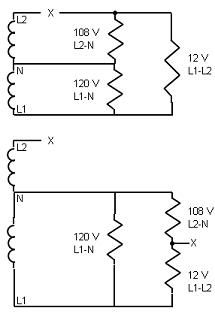Greg1707
Senior Member
- Location
- Alexandria, VA
- Occupation
- Business owner Electrical contractor
I had a service call today. The hot water heater, stove, AC etc. were not working in his house. I checked the panel and found 120 volts to neutral on each phase. When I checked the voltage phase to phase I got 12 volts. The SEC is buried and there is a meter bank in the back yard for all of the condos. I suggested he call the POCO.
What is the cause of a problem such as this?
What is the cause of a problem such as this?

